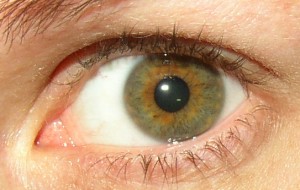 A Trait tends to come directly from the parent to the child. The odds then are very good that it’s a dominant trait. A trait can also skip a generation or come out of nowhere, and then the odds are it’s a recessive trait. If the two traits from your parents blend, then it is neither a dominant nor a recessive trait. Our DNA is like an instruction book. It has all of the instructions for making us who we are. These instructions come in forms of genes. You can get lots of clues from looking at your past family history, but there are also exceptions into figuring out whether the trait is dominant, recessive, or neither.
A Trait tends to come directly from the parent to the child. The odds then are very good that it’s a dominant trait. A trait can also skip a generation or come out of nowhere, and then the odds are it’s a recessive trait. If the two traits from your parents blend, then it is neither a dominant nor a recessive trait. Our DNA is like an instruction book. It has all of the instructions for making us who we are. These instructions come in forms of genes. You can get lots of clues from looking at your past family history, but there are also exceptions into figuring out whether the trait is dominant, recessive, or neither.
You get a copy of each allele from each parent, which makes up your genes. Not all genes are alike, that’s where the variety around us comes from. We all usually have the same genes, just different versions. Not all versions are created equal. Some of the genes are stronger than others. The stronger are called dominant and the weaker are called recessive. Dominant alleles almost always beat the recessive alleles. Imagine a kid for example gets a blue version of an eye color gene from mom and a brown one from dad. What eye color will the kid have? It depends on which one is dominant.
Geneticist uses family trees to determine if a trait is dominant or recessive. A family tree is a good way to show a family’s information. It lets you see how traits are passed down in each generation. B oys are squares and girls are circles in a family tree. Horizontal lines connecting a square with a circle means they’re a couple. Lines coming down vertically signify the Parent’s children. For an example, a family tree with grandparents has three children all with brown eyes even though the grandmother has blue eyes. When one of the daughters has a kid with a man with brown eyes, their one son ends up with blue eyes. When that son has a kids with a woman with blue eyes, all their children get blue eyes.
oys are squares and girls are circles in a family tree. Horizontal lines connecting a square with a circle means they’re a couple. Lines coming down vertically signify the Parent’s children. For an example, a family tree with grandparents has three children all with brown eyes even though the grandmother has blue eyes. When one of the daughters has a kid with a man with brown eyes, their one son ends up with blue eyes. When that son has a kids with a woman with blue eyes, all their children get blue eyes.
If a person shows a dominant trait, then at least one of their parents must always show the trait. Recessive traits skip a generation in a lot of cases. If both parents show their recessive trait, then all children should show that trait too. A child can only get a recessive trait if both their parents have a copy of a recessive allele, but they don’t need to show the trait. One copy is enough to reveal it, but both parents must carry it.
In conclusion found out the meanings of dominant and recessive traits and how you tell which one you have. We found out that dominant traits almost always beat recessive traits. We learned that recessive traits can usually skip a generation. We also learned that there are some exceptions to whether you have a dominant trait, recessive trait, or neither. A family tree is a good way to visualize your family’s information and conclude what kind of trait you have and what traits your children in the future could have based on past family history.
Questions
1) How do we know if we have a dominant trait, or recessive trait, or neither?
2) Which trait usually beats the other?
3) What is a good way to visualize your family’s information?
This topic was very interesting and it relates to what we are doing in class, so it was cool to see a post that I had already learned some background knowledge on. I didn’t know that being a Genticist was a job, and I think that that would be a neat job to have. From some outside research, I learned that recessive traits can be covered up, and appear later in the family tree, creating a child that is dissimilar to their parents. http://learn.genetics.utah.edu/content/inheritance/intro/
I thought this article was well put together with really good information that has to do with what were talking about in class right now. You can have both dominant or recessive because we get traits from both our father and mother. The dominant trait is just more likely to show than the recessive trait. You can always look back on your family history because sometimes you can find out why you have blue eyes, baldness, or even color blindness. Also your parent could be either homozygous or heterozygous for a specific trait. Homozygous is individual with two alleles that possesses for one gene that are the SAME. Now heterozygous is close to the same thing but, they are two alleles the are DIFFERENT for one gene.
http://www.sciencebrainwaves.com/blogs/biology/genetics/dominant-and-recessive-genes-in-humans/
I really liked this post. It brought up some interesting points that others may not have. But to answer your question about which trait usually beats the other, the answer is the dominant trait. The dominant trait doesn’t technically beat the other on, but it is the one that shows through, unless you have two recessive traits, then they are the ones that show through, since there is no dominant trait to dominant the recessive trait. http://school.eb.com/levels/high/article/37044
I thought your post was very interesting. Genetics is a field of science that is pretty complex even with all our modern technology. We now know what traits are dominant and recessive because of all the testing that has been done. Gregor Mendel, a long time ago, did some testing on peas on how genetics work. He found what dominant and recessive traits and also helped modern geneticists with the probability of how the genes are passed down. http://www.detectingdesign.com/gregormendel.html